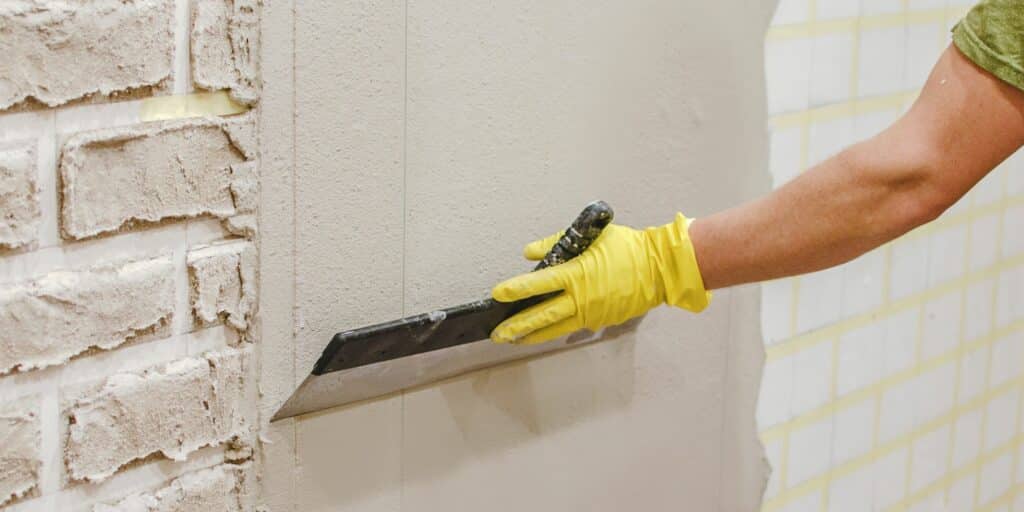Plastering is an essential step in the process of preparing your walls for painting. A smooth and even wall surface ensures a flawless paint job and a professional-looking finish. In this article, we will discuss the art of plastering, its importance in wall preparation before painting, and the benefits of hiring professional plastering services. Let’s dive in!
In our previous post on Interior & Exterior Painting, we discussed the importance of both interior and exterior painting. However, before you start painting, it’s crucial to prepare your walls properly. This involves a process called plastering. In our recent post, Plastering: The Art and Importance of Proper Wall Preparation Before Painting, we delve into the art of plastering and its significance in wall preparation before painting. We also highlight the benefits of hiring professional plastering services. If you’re considering a DIY painting project, you might also find our guide on Furniture Spray Painting: A DIY Guide and Why You Should Consider Hiring Professionals helpful. It provides valuable insights into the process and benefits of professional spray painting.
What is Plastering?
Plastering is the process of applying a layer of plaster, a mixture of sand, cement, and water, to the walls and ceilings of a building. This provides a smooth, even surface that is ideal for painting or applying other decorative finishes. Plastering can be done using various techniques and materials, such as gypsum, lime, or cement plaster.
Why is Plastering Important Before Painting?
Plastering is essential for several reasons:
- Smooth Surface: Plastering creates a smooth and even surface, which allows for a more uniform application of paint and a better finish.
- Durability: Plastered walls are more durable and resistant to wear and tear, ensuring that your paint job lasts longer.
- Moisture Resistance: Plastering helps to create a moisture-resistant barrier on the walls, preventing dampness and mold growth that can ruin your paint job.
- Insulation: Plastering also provides an added layer of insulation, helping to regulate temperature and reduce energy costs.
Professional Plastering Services: The Benefits
While it may be tempting to attempt plastering yourself, hiring professional plastering services has numerous advantages:
- Expertise: Professional plasterers have the knowledge, experience, and skill to ensure that the plastering job is done correctly and efficiently.
- Quality Materials: Professionals use high-quality materials, ensuring that your walls are smooth, durable, and ready for painting.
- Time and Effort: Plastering can be a time-consuming and labor-intensive process. Hiring professionals can save you time and effort, allowing you to focus on other aspects of your painting project.
- Guaranteed Results: Professional plastering services often come with guarantees or warranties, ensuring that you receive a high-quality result that will last for years to come.
FAQs
How long does plastering take to dry before painting?
Plaster typically takes about one week to dry fully. However, this can vary depending on factors such as humidity, temperature, and the thickness of the plaster. It is essential to wait for the plaster to dry completely before applying paint to avoid complications and ensure a perfect finish.
Can I paint directly on plaster?
It is not recommended to paint directly on fresh plaster. Instead, you should apply a primer or a mist coat (a diluted layer of emulsion paint) to seal the surface and create a suitable base for the paint. This helps prevent the paint from being absorbed into the plaster and ensures an even, long-lasting finish.
What type of paint should I use on plastered walls?
Water-based emulsion paints are generally the best choice for plastered walls, as they are breathable and allow moisture to evaporate. They also dry quickly, have low odor, and are easy to clean. You can choose between matte, satin, or eggshell finishes, depending on your preference and the desired look.
Conclusion
Proper wall preparation through plastering is crucial to achieving a flawless and durable paint job. Understanding the art of plastering and its importance in wall preparation can help you appreciate the benefits of hiring professional plastering services for your painting project. Investing in professional plastering will not only save you time and effort but also ensure that your walls are smooth, even, and ready for a high-quality paint finish that will last for years to come.

